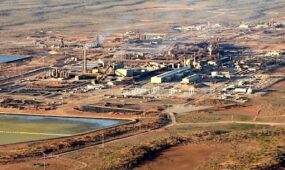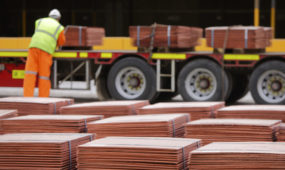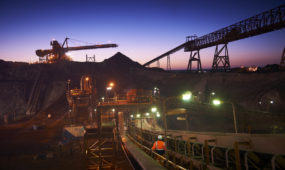Lincoln Minerals unveils high graphite assay results from drilling on South Australia's Eyre Peninsula
Mining & Resources
ADELAIDE-based Lincoln Minerals have recorded one of Australia’s highest yet graphite assay results in their latest round of drilling at the historic Koppio Graphite Mine located on the Eyre Peninsula of South Australia.

Sign up to receive notifications about new stories in this category.
Thank you for subscribing to story notifications.
The single one metre intersection, in Hole KPO17, recorded an assay of 42.8% total graphitic carbon (TGC) over the interval from a depth of 53 metres. The assay results are in accordance with the JORC Code1 2012.
Other highlights include graphite mineralisation at the historic mine site defined over 525 metres in strike length, remaining open to the north and south of current drilling extents.
Significant potential also exists on the adjoining but undrilled Kookaburra Gully Extended exploration targets.
Maiden drilling results:
Lincoln completed in April this year, a total of 20 aircore and reverse circulation (RC) drill holes over the historic Koppio Graphite Mine for a total of 1,679 metres.
Drilling at Koppio intersected varying grades and thicknesses with all but one drill hole intersecting minor to significant graphite mineralisation.
The one drill hole failing to hit graphite was drilled as a scissor hole to the mine section (see Figure 1 below) but was positioned too far away from the mineralisation to intersect graphite at depth.
Some 586 samples were taken for total graphitic carbon and carbon analysis. Upon receipt of those results, several zones have been identified that require further sampling to close off mineralisation before Mineral Resource estimation can commence.
Drill hole assay intercepts have been tabulated based upon a nominal 2% TGC cut-off and further by a 5% TGC cut-off (Table 1).
The April drilling at Koppio has extended the extent of graphite mineralisation from a strike length of ca. 50m to over 525m and a depth extent of at least 100m below ground level at the site of the historic workings.
The current strike length is still open to the north and south of existing drilling. The aggregate true thickness of graphite layers at the mine site and 160m SW is about 14-15m but to the NE of the mine, the units thin to an aggregate true thickness of 6-7m. The interpteted dip of the graphite units is about 60-75° to the ESE but they are complexly folded.
Lincoln Minerals’ Managing Director, Dr John Parker, stated that:
“The Koppio drilling has highlighted some spectacular individual sample intervals and the strike extent defined by this drilling has confirmed electromagnetic (EM) imagery for further exploration target drilling. While it is too early to define a Mineral Resource at the historic Koppio Graphite Mine, the new results when combined with the Company’s high grade Kookaburra Gully Resource, clearly indicate that this region of Eyre Peninsula is shaping up as a world class graphite province. In light of these drilling results, EM imagery over Kookaburra Gully Extended outlines a very significant exploration target for follow up after winter crops have been harvested.”
Site History:
The historic Koppio Graphite Mine was intermittently mined from the early 1900’s to 1944 (South Australian Department of Mines (now SA Department for State Development) Report Book 21/87, 1945) and contains high grade lenses of coarse flake graphite up to 32% TGC. Up to 100 tonnes of graphite was mined from Koppio during the 1940s and processed in Port Lincoln. However, it is not known what concentrate was produced and/or sold.
Previous petrological studies for Lincoln on samples from the old underground workings have shown that flake length is good and ranges up to 800 microns.
Jump to next article



